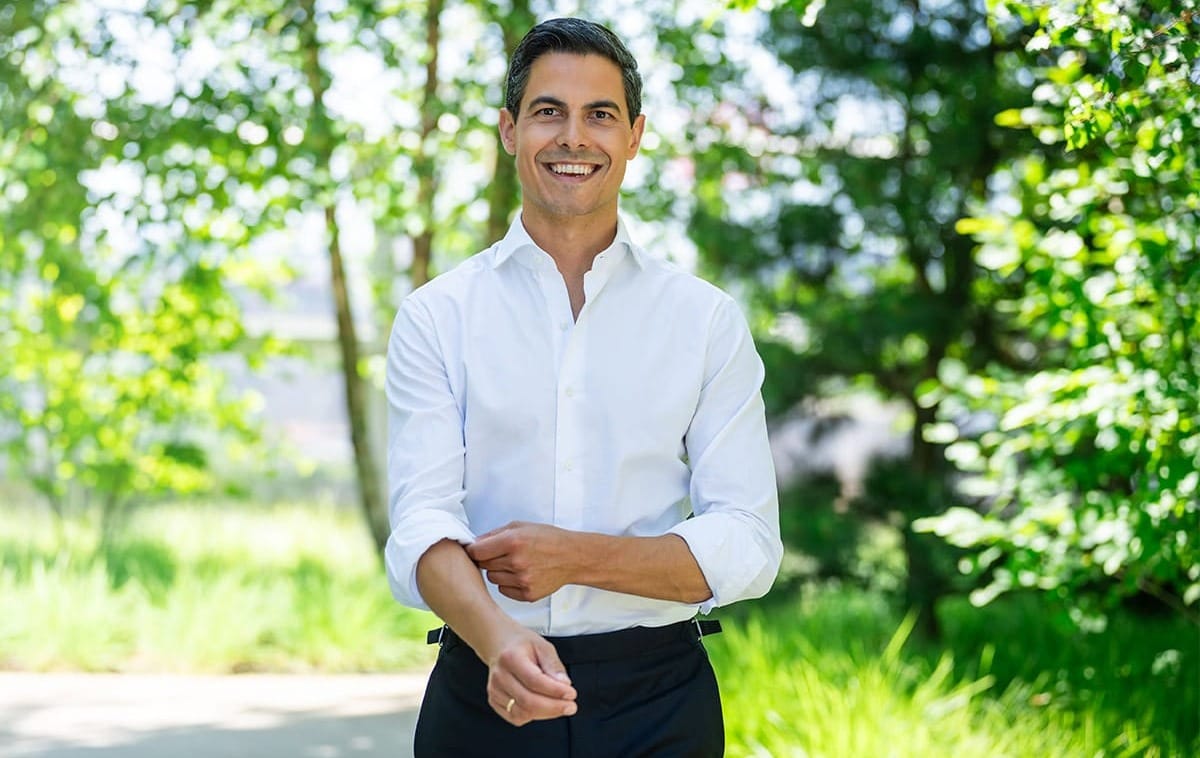Rob Jetten on track to become first gay leader of the Netherlands
The social liberal is neck-and-neck with the right-wing populists.

With the polls closing on 29 October, at the time of writing the outcome is still too close to call in the Dutch election.
But what is clear is that the social liberal party D66 - led by Rob Jetten - has made huge gains and is vying neck-and-neck with the right-wing populist party of Geert Wilders for a parliamentary majority.
If the votes go D66's way, that will make Rob Jetten the new Prime Minister of the Netherlands.
At age 38, Jetten will not only be the youngest Prime Minister of the Netherlands, but he'll also be the country's first openly gay leader.
With 76 seats needed to form a governing coalition, a likely scenario is that the centre-left parties will work together - with Jetten and the D66 leading the government. A centre-left alliance will deliberately and effectively exclude Wilders from power.
Jetten has been active in politics from a young age. He publicly discussed his sexuality from the beginning. He's engaged to Nicolás Keenan, a hockey player from Argentina - their marriage is scheduled for 2026.
First elected as a member of parliament in 2017, Jetten has served in ministerial roles in previous governments and has built a brand as being cheerful and pragmatic.
What’s life like for LGBTQ people in The Netherlands?
What’s life like for LGBTQ people in The Netherlands? Let’s take a look at some of the key equality indicators.
Is homosexuality legal in The Netherlands?
Yes. Same-sex sexual activity was decriminalised in 1811.
Decriminalisation happened when France invaded The Netherlands and imposed its legal system – this erased the anti-sodomy laws that had previously been in place. There has been no attempt to reintroduce anti-sodomy laws since that time.
There is an equal age-of-consent regardless of sexuality.
Are there anti-discrimination protections for LGBTQ people in The Netherlands?
Yes. Comprehensive anti-discrimination protections were implemented in 1994.
Is there Marriage Equality in The Netherlands?
Yes. Legal recognition of same-sex relationships began in 1998, and in 2001 The Netherlands became the first country in the world to adopt Marriage Equality.
What’s life like for LGBTQ people in The Netherlands?
The Netherlands is one of the most culturally and socially liberal countries in the world.
It is a country that welcomes and celebrates LGBTQ people.
There is a vibrant and visible LGBTQ community.
In the ILGA report on LGBTQ Equality in Europe, the Netherlands was ranked 13th overall. With a total score of 63.82%, the Netherlands lost points on the criteria of Hate Crime & Hate Speech and also Intersex Bodily Integrity.
What were the Utrecht sodomy trials?
The Utrecht sodomy trials were a large-scale persecution of homosexuals that took place in the Dutch Republic, starting in the city of Utrecht in 1730.
Over the following year, the persecution of ‘sodomites’ – which was how gay men were described – spread to the rest of the nation, leading to the trial and persecution of around 300 men – many of whom were convicted and executed.
What led to the Utrecht sodomy trials?
The period leading up to 1730 had been a difficult time for the Dutch Republic. It’s cattle herds had been struck by disease, and the important dike defences against flooding were being undermined by shipworm. This came on top of a number of natural disasters in preceding decades – all ascribed to divine wrath. All of this left the people of the Dutch Republic susceptible to moral panic.
The Dom Church in Utrecht had been the city’s most important religious site for centuries. In 1674, a major storm caused the collapse of the church’s nave. The ruins of the nave became a well-known cruising area and meeting point for the city’s gay men.
In April of 1730, church officials requested that the city authorities take action to prevent gay men from meeting in the church ruins.
A number of men were arrested. The confessions of the men arrested at the church indicated the presence of networks and meeting places of homosexuals elsewhere in the Dutch Republic.
Urged on by the Protestant church, the following months saw a wave of prosecutions, as authorities took action against the men whose sexuality had been exposed in confessions by men who had been arrested.
Men from all levels of society were implicated – the wealthy were often able to flee before they could be arrested.
In Utrecht, about forty men were tried on the charge of sodomy – 18 were convicted and strangled. Death by strangling was the most common punishment for homosexual acts in the Dutch Republic, but other punishments during this anti-gay purge included hanging or drowning in a barrel of water.
The bodies of the men executed for sodomy were either burnt, cast into the sea, or buried under the gallows.
While there were suggestions that the sodomy trials were in some instances used to target political enemies of the ruling authorities, historians have concluded that most of men named in confessions and accused of sodomy were gay men. This confirms that while this was a moral panic, the sodomy trials weren’t some kind of hysterical witch-hunt but a deliberate pogrom or purge of gay men.
What happened after the Utrecht sodomy trials?
The persecution of gay men in the Dutch Republic continued long after 1730. Several waves of prosecution followed during the eighteenth century – particularly in 1764, 1776, and 1797.
How are the Utrecht sodomy trials remembered?
The Dom Square – the place where gay men cruising became to touch-paper that triggered the sodomy trials – is now the home of the Sodomonument.
Unveiled in 1999, the Sodomonument is a stone that commemorates the deaths of the gay men persecuted during this period of history.
